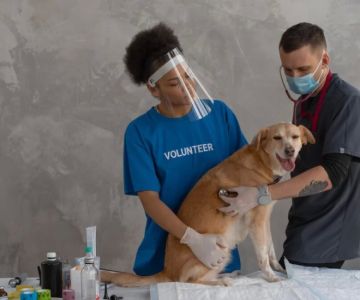- 1-how-to-become-a-veterinary-receptionist-understanding-the-role-of-a-veterinary-receptionist
- 2-how-to-become-a-veterinary-receptionist-essential-skills-and-qualities-for-success
- 3-how-to-become-a-veterinary-receptionist-education-and-training-options
- 4-how-to-become-a-veterinary-receptionist-day-to-day-duties-and-responsibilities
- 5-how-to-become-a-veterinary-receptionist-real-life-experience-and-career-growth
- 6-how-to-become-a-veterinary-receptionist-tips-for-applying-and-excelling-in-the-role
1. Understanding the Role of a Veterinary Receptionist
Becoming a veterinary receptionist involves managing the front desk of a veterinary clinic, where you are the first point of contact for clients and their pets. This role requires excellent communication skills and the ability to multitask efficiently to support smooth clinic operations.
The position blends administrative duties with customer service, often requiring quick thinking and empathy to handle anxious pet owners and urgent situations.
2. Essential Skills and Qualities for Success
Successful veterinary receptionists possess strong organizational skills, a friendly demeanor, and basic knowledge of veterinary terminology. Proficiency with appointment scheduling software and phone systems is vital.
Patience and compassion stand out as key traits, enabling receptionists to comfort distressed clients while coordinating with veterinarians and support staff effectively.
3. Education and Training Options
While a high school diploma is often sufficient, completing specialized training or certifications in veterinary administration can boost employability. Many community colleges and online platforms offer relevant courses covering medical terminology, client communication, and office management.
Hands-on experience through internships or volunteering at animal clinics provides valuable exposure and practical skills.
4. Day-to-Day Duties and Responsibilities
Daily tasks include greeting clients, booking appointments, managing medical records, processing payments, and coordinating with veterinary staff for smooth patient flow. Receptionists also handle inquiries, provide basic pet care advice, and manage clinic inventory.
Flexibility is essential as duties can expand during emergencies or busy periods.
5. Real-Life Experience and Career Growth
Jessica shares, “Starting as a receptionist at a small veterinary clinic gave me hands-on experience that led to a role as a veterinary technician. The receptionist position was my foot in the door and helped me understand clinic dynamics deeply.”
Many receptionists use this role as a stepping stone to advance into veterinary nursing, practice management, or specialized care fields.
6. Tips for Applying and Excelling in the Role
Tailor your resume to highlight customer service skills, organizational ability, and any veterinary-related experience. Prepare for interviews by researching common questions and demonstrating knowledge of clinic operations.
Once hired, cultivate strong relationships with colleagues, stay updated on veterinary practices, and embrace continuous learning to stand out.
For comprehensive training resources and job listings, explore professional platforms and seek guidance from experienced veterinary receptionists.









